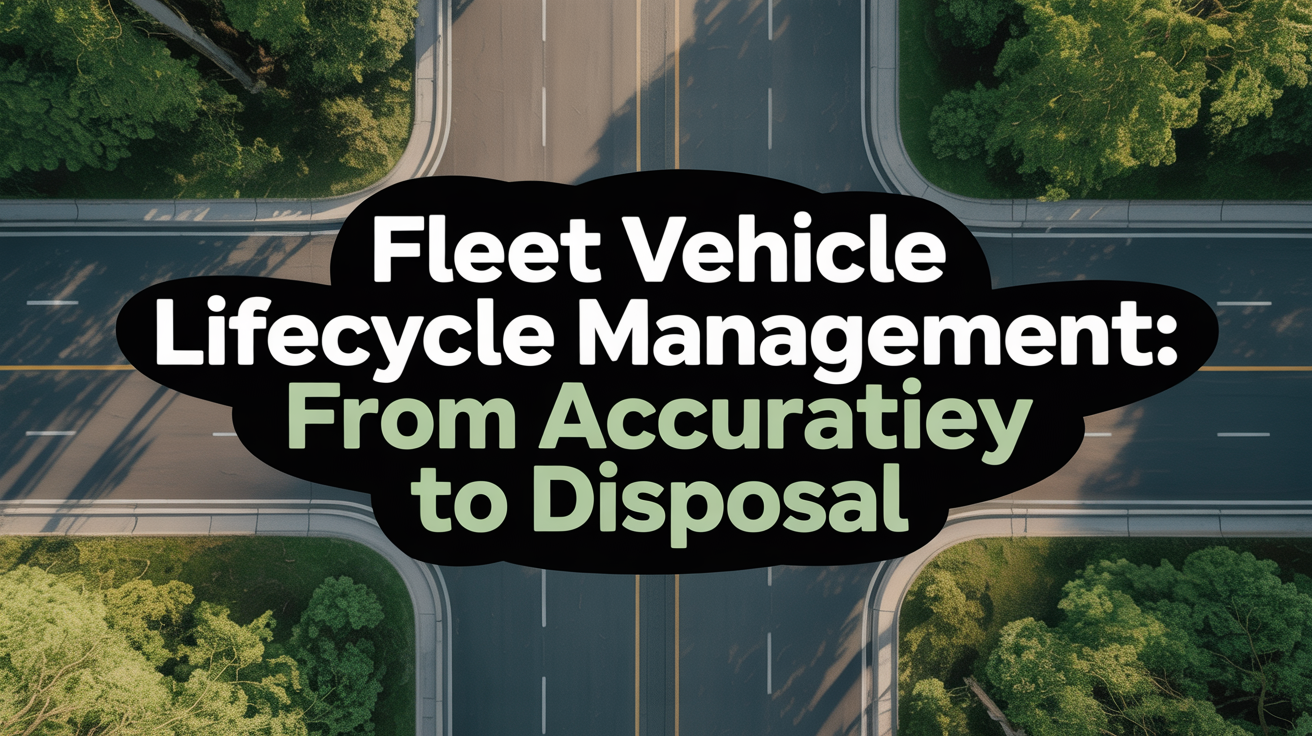Integrating Fleet Management and GPS Tracking: A Step-by-Step Guide
Fleet management has become increasingly complex as businesses strive to balance efficiency, safety, and cost-effectiveness. With so many moving parts, real-time vehicle data is no longer a luxury-it’s a necessity. Companies are turning to GPS tracking as a powerful solution to gain operational transparency, reduce inefficiencies, and ensure driver safety. By integrating fleet management systems with GPS tracking, businesses can unlock deeper insights into their operations and streamline workflows like never before. 🚛✨
In this guide, we’ll walk you through the essentials of combining fleet management and GPS tracking, step by step. From understanding the basics to implementing best practices, you’ll learn how this integration can transform your business. Whether you’re managing a small delivery service or a large logistics operation, this article will equip you with actionable strategies to enhance your fleet’s performance. Plus, we’ll introduce you to Nektar.io, a trusted partner for seamless integration solutions. Let’s dive in!
Understanding Fleet Management and GPS Tracking Basics
Fleet management refers to the coordination and oversight of vehicles used for business purposes. This includes tasks like route planning, fuel monitoring, maintenance scheduling, and compliance tracking. On the other hand, GPS tracking involves using satellite technology to monitor the location and movement of vehicles in real time. While fleet management focuses on the “big picture,” GPS tracking provides granular data that enhances decision-making. Together, they create a powerful synergy that transforms how businesses operate. 🌍📊
When integrated, these systems work hand-in-hand to provide a comprehensive view of fleet activities. For example, GPS data can alert fleet managers to inefficient routes or unauthorized vehicle use, while fleet management tools help schedule timely maintenance based on mileage tracked by GPS. This combination benefits businesses of all sizes, from startups to enterprises, by boosting productivity and reducing costs. Now that we’ve covered the basics, let’s explore why this integration is such a game-changer.
Key Benefits of Integration
The integration of fleet management and GPS tracking offers numerous advantages, starting with improved operational efficiency. Real-time visibility into vehicle locations allows managers to optimize routes, reduce idle times, and respond quickly to unexpected delays. Imagine rerouting a driver to avoid traffic congestion or sending the nearest available vehicle to an urgent job-these small adjustments can save hours and gallons of fuel. 💡⛽ Additionally, features like automated maintenance alerts prevent costly breakdowns and extend vehicle lifespans.
Safety is another critical benefit. GPS tracking helps enforce safe driving behaviors by monitoring speed, harsh braking, and sudden acceleration. It also aids in theft recovery and ensures drivers stay within designated areas. Finally, businesses see enhanced customer satisfaction thanks to accurate ETAs and faster response times. These improvements not only cut costs but also strengthen brand reputation. Clearly, integrating these systems is a win-win for everyone involved. So, what types of GPS tracking systems should you consider?
Types of GPS Tracking Systems
GPS tracking systems come in various forms, ranging from simple plug-and-play devices to sophisticated telematics platforms. Basic trackers provide real-time location updates and geofencing capabilities, making them ideal for smaller fleets. Meanwhile, advanced solutions offer detailed analytics, engine diagnostics, and even driver behavior monitoring. When choosing a system, consider factors like ease of use, scalability, and compatibility with your existing fleet management software. 📱⚙️
“GPS fleet tracking may have started out as a way to keep drivers from getting lost, but it provides many valuable benefits to companies that have a fleet of vehicles on the road.” -Motive
For instance, cloud-based platforms allow managers to access data remotely via smartphones or desktops, ensuring constant connectivity. Reporting tools are also crucial, enabling users to generate insights on fuel consumption, driver performance, and route efficiency. Investing in the right GPS solution lays the foundation for successful integration. But before you make a purchase, it’s important to assess your current setup and define clear goals. Let’s talk about how to prepare for this process.
Preparing for System Integration
The first step toward seamless integration is evaluating your current fleet management system. Identify its strengths and weaknesses-does it already support some level of GPS functionality? Next, set specific objectives for the integration, such as reducing fuel costs or improving delivery times. These goals will guide your choice of hardware and software. Engaging stakeholders early on is equally vital; their input can reveal pain points and opportunities you might overlook. 👥📋
Compatibility is another key consideration. Ensure the GPS devices and fleet management platform you choose can communicate effectively. This may involve consulting with vendors or seeking expert advice from companies like Nektar.io, which specialize in integration services. Once you’ve laid the groundwork, it’s time to move on to selecting the right tools. The next section breaks down how to pick hardware and software tailored to your needs.
Step-by-Step Integration Process
Choosing the Right Hardware and Software
Selecting the appropriate GPS devices and fleet management software depends on several factors, including fleet size, budget, and long-term growth plans. For smaller fleets, affordable plug-and-play devices might suffice, while larger operations may require ruggedized units with advanced telematics. Similarly, scalable software ensures your system grows alongside your business. Always prioritize user-friendly interfaces and reliable customer support. 🔧💻
Installation and Configuration
Installing GPS hardware typically involves connecting devices to a vehicle’s OBD-II port or wiring them directly into the electrical system. If you’re unfamiliar with these processes, hiring a professional installer can save time and prevent errors. After installation, configure the software settings to align with your operational requirements. For example, set up geofences, assign vehicles to drivers, and customize reporting templates. Double-check connections to avoid issues like signal loss or inaccurate data. 🚘🛠️
“By integrating GPS trackers with cloud-based management platforms, fleet managers gain unparalleled visibility over their entire operation, right from their desktops or smartphones.” -SimplyFleet
Avoid common pitfalls by testing each device thoroughly before full deployment. Simulate different scenarios, such as entering/exiting geofenced zones or sending location updates during travel. Once everything functions as expected, proceed to integrate GPS data streams with your fleet management dashboard.
Connecting to Fleet Management Systems
Linking GPS data to your fleet management system ensures seamless information flow. Most modern platforms offer APIs or built-in integrations, simplifying this step. Verify that all data points-like location, speed, and fuel levels-are accurately reflected in your dashboard. Regularly review reports to confirm accuracy and address discrepancies promptly. With the technical aspects complete, it’s time to focus on training staff to maximize adoption.

Training Drivers and Staff
Successful implementation hinges on proper training. Introduce drivers and staff to the new system’s features, emphasizing how it benefits both the company and individual roles. Hands-on sessions work best, allowing participants to practice using the interface and ask questions. Address potential concerns about privacy or excessive monitoring upfront, reassuring employees that the system aims to improve safety and efficiency rather than micromanage. 🙋♂️🙋♀️
Provide ongoing support through FAQs, tutorials, and dedicated help desks. Encourage feedback to refine processes and address any lingering resistance. Well-trained teams are more likely to embrace the technology, leading to smoother operations and better results. Speaking of results, linking GPS data to other business software amplifies its value. Let’s explore how centralizing operations enhances productivity.
Centralizing Operations: Integrating with Other Business Software
Integrating GPS data with field service, dispatch, HR, or billing platforms creates a unified ecosystem where information flows effortlessly across departments. For example, linking GPS tracking to dispatch systems enables automatic assignment of nearby drivers to new jobs, reducing response times. Similarly, syncing mileage logs with payroll software streamlines expense reimbursement and reduces manual entry errors. 🔄📈
“The installation and integration process for GPS tracking systems can vary depending on the system and the specific needs of your fleet. However, some general steps to follow include identifying the vehicles that will be equipped with GPS tracking devices, installing the devices and antennas, configuring the system settings, and testing the system to ensure it is working properly.” -GoFleet
This interconnected approach empowers managers to make informed decisions quickly. Unified data also facilitates workflow automation, freeing up staff to focus on higher-value tasks. By leveraging these synergies, businesses achieve greater agility and competitiveness. However, maintaining peak performance requires continuous effort. In the next section, we’ll discuss best practices for optimizing your integrated system over time.
Best Practices for Ongoing Use and Optimization
To maximize ROI, regularly review system performance and adjust settings as needed. Analyze reports to identify trends, such as frequent delays on certain routes or recurring mechanical issues. Use these insights to refine policies and procedures. Staying current with software updates ensures access to the latest features and security patches. Consider setting aside time monthly or quarterly for audits and optimizations. ⚙️📚
Engage employees in this process by soliciting their feedback and recognizing contributions to system improvements. Celebrating wins, big or small, fosters a culture of continuous improvement. Remember, technology alone won’t solve every challenge-human ingenuity plays a crucial role. Even with careful planning, though, challenges may arise. Let’s examine some common obstacles and how to overcome them.
Troubleshooting and Common Challenges
Hardware malfunctions, data integration glitches, and user resistance are among the most frequent hurdles when integrating fleet management and GPS tracking. A device losing signal or failing to transmit data can disrupt operations, so having spare units on hand is wise. Data mismatches between systems often stem from incorrect configurations; double-check mappings and consult vendor documentation if needed. 🛠️🔍
User pushback usually stems from fear of surveillance or perceived added workload. Clear communication and transparency about the system’s purpose can alleviate these concerns. Additionally, providing robust training and highlighting tangible benefits helps build trust. If problems persist, reach out to technical support or seek assistance from experts like those at Nektar.io. Overcoming these challenges sets the stage for measuring success.
“When all your business’s systems work together, it’s much easier to get every task done. That’s why integrating GPS tracking with your management software makes such a difference. It’ll help you be more productive, get things done faster, and keep operations simple.” -ServiceFusion
Measuring Success: KPIs and ROI of Integration
Key performance indicators (KPIs) like fuel savings, reduced maintenance costs, and improved customer satisfaction scores offer concrete evidence of integration success. For example, tracking miles driven per gallon of fuel can highlight efficiency gains, while analyzing repair records reveals whether preventive maintenance schedules are effective. Customer feedback surveys gauge satisfaction levels, reflecting the impact of faster deliveries and accurate ETAs. 📊🏆
To calculate ROI, compare initial investment costs against measurable benefits. Factor in savings from reduced fuel consumption, fewer accidents, and lower labor costs due to streamlined processes. Many businesses report significant returns within months of implementation. Armed with this data, you can justify further investments in technology upgrades. Now, let’s tackle some frequently asked questions about fleet management and GPS tracking.

FAQ: Integrating Fleet Management and GPS Tracking
1. What are the most important features to look for in a GPS fleet tracking system?
Prioritize features like real-time tracking, geofencing, driver behavior monitoring, and detailed reporting. Scalability and ease of integration are also essential for long-term usability.
2. How long does it typically take to integrate GPS tracking with a fleet management system?
Integration timelines vary but generally range from a few weeks to a couple of months, depending on fleet size and complexity.
3. What are the main costs involved in GPS integration for fleets?
Costs include hardware purchases, software subscriptions, installation fees, and potential training expenses. However, these are often offset by operational savings.
4. How does GPS tracking benefit route planning and dispatch?
GPS data enables dynamic route optimization and real-time dispatch adjustments, improving efficiency and customer satisfaction.
5. How can fleet managers address driver privacy concerns?
Be transparent about data usage, emphasize safety and efficiency goals, and involve drivers in discussions to build trust.
Conclusion
Integrating fleet management and GPS tracking revolutionizes how businesses operate, offering unparalleled transparency, efficiency, and control. From optimizing routes to enhancing safety and cutting costs, the benefits are undeniable. By following a structured approach-assessing needs, selecting tools, training staff, and continuously optimizing-you can harness the full potential of these technologies. 🚀💼
If you’re ready to elevate your fleet operations, now is the time to act. Assess your current systems, explore innovative solutions like those offered by Nektar.io, and embark on your integration journey. The future of fleet management is here, and it starts with taking that first step. Don’t wait-unlock new possibilities today! ✨
Visit Nektar.io to discover how their expertise can streamline your fleet management and GPS tracking integration. Your smarter, more efficient fleet awaits! 🌟


